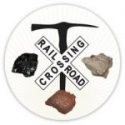More extensive resources and information about the Birmingham Mineral Railroad and other historic railroads in the Birmingham area can be found at locations such as the following:
Cartographic Research Laboratory at the University of Alabama website
Birmingham Rails website
Holdings of the Birmingham Public Library–both digital and hard copy
Jefferson County Historical Association
Heart of Dixie Railroad Museum
Holdings of the Alabama Department of Archives and History
Louisville and Nashville Historical Society
EXCELLENT ON-LINE USGS HISTORICAL TOPO MAPS OVERLAY TOOL:
If you are interested in overlaying historic maps onto current maps, the United States Geological Survey has provided an excellent resource for doing that. Many of the historic maps that can be overlaid at that website show the Birmingham Mineral Railroad (usually as “L & N Railroad”), and the overlaying capability will enable you to see where it ran in relation to present-day maps. Visit the Historical Topo Map Explorer website indicated below. Listed below are INSTRUCTIONS for using that online map overlay tool.
NOTE: The first time you use the system, it may show you a “Welcome” screen. If so, click on “Bring on the topo maps!”
1. EITHER enter a location in the “Find address or location” search box (for example, Bessemer, Alabama) and choose the location you want from the drop-down menu.
OR using the mouse roller, zoom in to find the location you want to view, then move the crosshairs to that location and click the left mouse button.
2. View (on the left side of the screen) the historic topo maps available for overlaying for that location.
3. At any point, you can use the plus/minus zoom option at the top right or the mouse roller to zoom in closer to find or view a specific location.
4. Also, to pan/move the map image to get to a specific location, you can use the arrow keys on your keyboard, or you can hold down the left mouse button to pan/move the map image.
5. On the left side of the screen, left click on the small image of the map you want to have overlaid onto the current map.
6. Use the slider bar below the smaller map image to change the transparency of the older map in order to see through it to the current map.
7. To leave that overlaid map and go to another map to overlay, click on another small map image on the left.
8. You also can close the overlaid map and again view the current topo map by clicking anywhere on the map being viewed.
NOTE: If using a device such as an iPad, your fingers can replace some of the mouse functions described above.
NOTE: Some of the older (1800’s) maps may not be as accurate for some areas as are current USGS maps; the historic maps after 1900 generally are more accurate. In some instances, the older maps were not well geo-referenced. They provide good information, but the features on the maps may not line up exactly with today’s features. The very old maps are fine for using, but you may need to mentally shift them a little to line up with known features on the current map (for example, the route of a creek on an older map may be shifted a little from its true current course).
